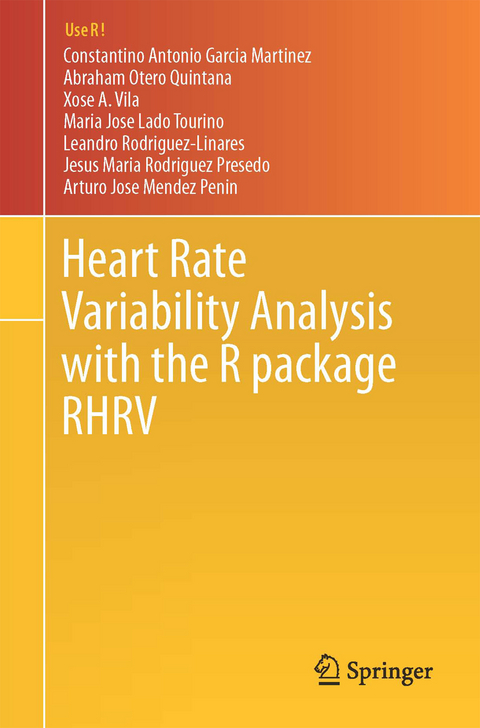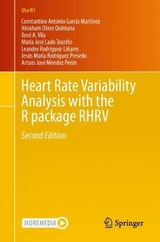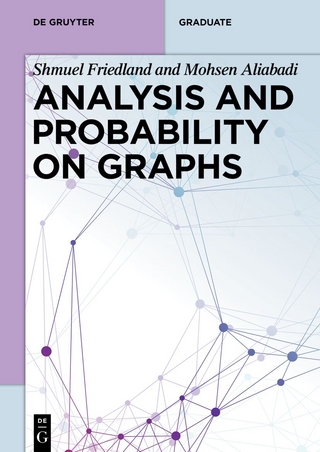
Heart Rate Variability Analysis with the R package RHRV
Springer International Publishing (Verlag)
978-3-319-65354-9 (ISBN)
- Titel erscheint in neuer Auflage
- Artikel merken
This book introduces readers to the basic concepts of Heart Rate Variability (HRV) and its most important analysis algorithms using a hands-on approach based on the open-source RHRV software. HRV refers to the variation over time of the intervals between consecutive heartbeats. Despite its apparent simplicity, HRV is one of the most important markers of the autonomic nervous system activity and it has been recognized as a useful predictor of several pathologies. The book discusses all the basic HRV topics, including the physiological contributions to HRV, clinical applications, HRV data acquisition, HRV data manipulation and HRV analysis using time-domain, frequency-domain, time-frequency, nonlinear and fractal techniques.
Detailed examples based on real data sets are provided throughout the book to illustrate the algorithms and discuss the physiological implications of the results. Offering a comprehensive guide to analyzing beat information with RHRV, the book is intended for masters and Ph.D. students in various disciplines such as biomedical engineering, human and veterinary medicine, biology, and pharmacy, as well as researchers conducting heart rate variability analyses on both human and animal data.
Constantino Antonio García Martínez is a Ph.D. student in Computer Science and Artificial Intelligence at the Centro Singular de Investigación en Tecnoloxías da Información (University of Santiago de Compostela). His main research interest is the application of stochastic models and dynamical systems theory to biosignals, especially in the field of electrocardiography and heart rate variability analysis. Abraham Otero was born in Orense, Spain in 1978. He received a B.Sc. degree in Physics in 2000 (with honors), and Ph.D. degree in Computer Science from the University of Santiago de Compostela. In 2006 he moved to San Pablo CEU University, where he cofounded the Laboratory of Bioengineering and created the Biomedical Engineering degree course. Currently he is an associate professor and coordinator of the degree in Biomedical Engineering at the University CEU San Pablo, and visiting professor at the University of Turabo, Puerto Rico. He is coauthor of 24 scientific papers and 38 contributions at conferences and symposiums, most of then in the field of biosignal processing.
Foreword.- Preface.- 1 Introduction to Heart Rate Variability.- 2 Loading, Plotting and Filtering RR Intervals.- 3 Time Domain Analysis.- 4 Frequency Domain Analysis.- 5 Nonlinear and Fractal Analysis.- 6 Comparing HRV Variability across Different Segments of a Recording.- 7 Putting it All Together, a Practical Example.- A Installing RHRV.- B How do I Get a Series of RR Intervals from a Clinical/Biological Experiment?
| Erscheinungsdatum | 17.10.2017 |
|---|---|
| Reihe/Serie | Use R! |
| Zusatzinfo | XVI, 157 p. 50 illus., 29 illus. in color. |
| Verlagsort | Cham |
| Sprache | englisch |
| Maße | 155 x 235 mm |
| Gewicht | 308 g |
| Themenwelt | Mathematik / Informatik ► Mathematik ► Wahrscheinlichkeit / Kombinatorik |
| Medizin / Pharmazie | |
| Schlagworte | biomedical engineering • Biostatistics • Cardiac Imaging • Cardiology • Cardiovascular medicine • Epidemiology & medical statistics • Epidemiology & medical statistics • fractal analysis • Frequency Domain Analysis • Heart rate variability analysis • Imaging Systems & Technology • Imaging Systems & Technology • Life sciences: general issues • mathematics and statistics • Medical Imaging • Nonlinear analysis • probability & statistics • Probability & statistics • Signal, Image and Speech Processing • Signal Processing • Statistics for Life Sciences, Medicine, Health Sci • Time Domain Analysis |
| ISBN-10 | 3-319-65354-7 / 3319653547 |
| ISBN-13 | 978-3-319-65354-9 / 9783319653549 |
| Zustand | Neuware |
| Informationen gemäß Produktsicherheitsverordnung (GPSR) | |
| Haben Sie eine Frage zum Produkt? |
aus dem Bereich



